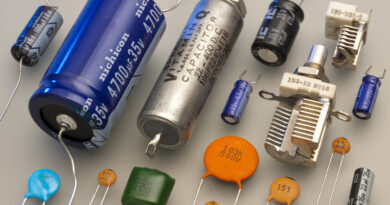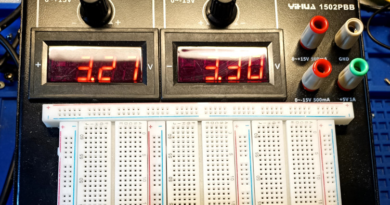DIY Guitar Pedal & Creating Great Sound With Effect Pedals
Guest Blog Post: DIY Guitar Pedal & Creating Great Sound With Effect Pedals
By: Natalie Wilson of Musical Advisors
One of our friends at Musical Advisors found our blog and wanted to contribute a guest post. She includes good information to build your own DIY Guitar Pedal, a step-by-step guide for building your own guitar pedal and components list, many of which you can find at CircuitSpecialists.com we hope you enjoy!
Technology has opened up a world of opportunity for musicians to experiment with different sounds and even create their own DIY Guitar Pedal. Effect pedals are an excellent and affordable way to create musical effects that will alter the timing, pitch, and quality of an audio signal. Musicians who are looking to create complex sound effects can then combine these pedals into a chain to take full advantage of all these possibilities.
Here are some ways to create a great sound with effect pedals.
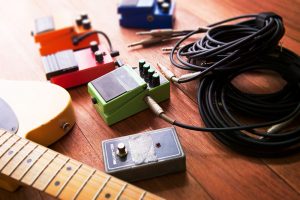
Compressor Pedals
Compressor pedals are some of the most underrated guitar pedals that exist. These devices will balance out your tone and prevent any unwanted spikes in your signal from overpowering the rest of your sound. These pedals are extremely versatile and can be used in any style of music, making them a great investment for all musicians.
Delay and Reverb Pedals
Delay and reverb pedals are some of the most popular types of effect pedals. Delay pedals create echo effects that you can fine tune through timing, feedback, and volume knobs. The timing knobs will affect the amount of time that elapses between each echo, and the feedback knob will affect how many echoes you hear.
A popular band known for their use of delay pedals is U2. Reverb pedals complete a similar effect but have a different end goal. These pedals aim to create a specific setting, such as a performance hall, cathedral, or a room. After selecting your setting, the device will create a reverberant sound that you can fine tune using decay and tone knobs.
Distortion Pedals
Distortion pedals are the epitome of rock music. These pedals will increase the gain until you surpass a certain threshold. After you surpass the threshold, your sound will become distorted and you’ll hear a grainy, fuzzy quality. This “dirty” sound is usually associated with classic rock music because that was when the effect first became popular. Artists like Jimi Hendrix incorporated distortion pedals into his music, and they’ve remained popular among rock musicians ever since. Distortion pedals can either refer to a specific type of pedal or a group of pedals that all create an unclear sound quality. Fuzz and overdrive pedals are two other types of distortion pedals.
The difference between these pedals is the intensity of the distortion. If you’re looking for a really distorted sound, similar to the sound of The Black Keys, then you should consider a fuzz pedal. For a cleaner sound than what you’ll hear with a regular distortion pedal, try using an overdrive.
Modulation Pedals
Modulation pedals will allow musicians to take their sound to the next level by altering the amplitude, pitch, and phase. While delay and reverb pedals will alter the timing of your sound, these pedals will create more obscure, less natural effects.
For example, the flanger pedal is known for its metallic quality. These pedals create a sound that swells up and down, similar to the effect you hear when a plane passes by overhead. Chorus pedals are another popular type of modulation pedals. These devices slightly alter the timing and pitch of your sound to mimic the natural “imperfections” of a human chorus.
Creating a Pedal Chain
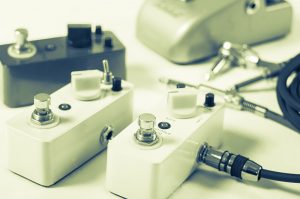
The ultimate way to create a great sound with effect pedals is by combining them into a pedal chain. Pedal chains are lines of guitar pedals that are placed in a specific order to produce the ideal sound a musician is looking for. When creating a pedal chain, there are a few rules of thumb that will put you on the right track.
For example, it’s best to place volume pedals before modulation pedals. If you place a compressor pedal after a pitch-shifting pedal, for example, you’ll have less control over the volume of certain modulated effects. Another great tip for setting up your guitar pedal chain is putting the reverberance pedals at the end, just before the signal gets sent to an amplifier.
DIY Guitar Pedal
These pedals create the illusion of different acoustic settings, which means it’s better to establish your ideal sound through other pedals first, and then make your sound more reverberant. Creating a pedal chain can seem overwhelming initially, but it really is quite manageable if you follow a few simple steps. For more information, check out this tutorial. If you enjoy constructing devices and want to create your own diy guitar pedal to make a chain, make sure to do some research on the best type of pedal for you. Building a guitar pedal can seem daunting, but this step-by-step guide will help you out. Circuitspecialists.com has almost everything you’ll need to get started. To build a distortion pedal, you’ll need:
- A small electronics breadboard
- A soldering iron
- Solder
- Jumper cables
- Wire stripper and wire cutter
- Needle-nosed pliers
- A Phillips-head screwdriver
- An adjustable wrench or wrench set
- A digital multimeter
- A vise
- A small saw
- Foam tape
In Conclusion
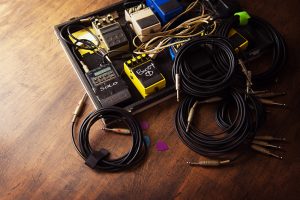
Hopefully, you found these tips on how to create a great sound with effect pedals and a diy guitar pedal useful. Effect pedals offer musicians endless opportunities for experimenting with sound by altering their timing, pitch, clarity, and other musical elements. The best way to take advantage of these pedals is by creating a logical pedal chain.
About me:
 |
Hi, everyone!
I’m Natalie Wilson, I start a music blog to share my knowledge to enhance your skills as a musician . You’ll find a wide range of topics on my blog, including reviews, tutorials, and tips for musicians. Feel free to contact me at natalie.musicaladvisors@gmail.com.
|
